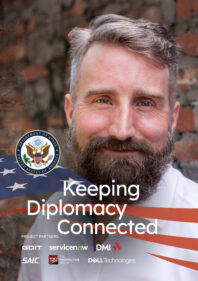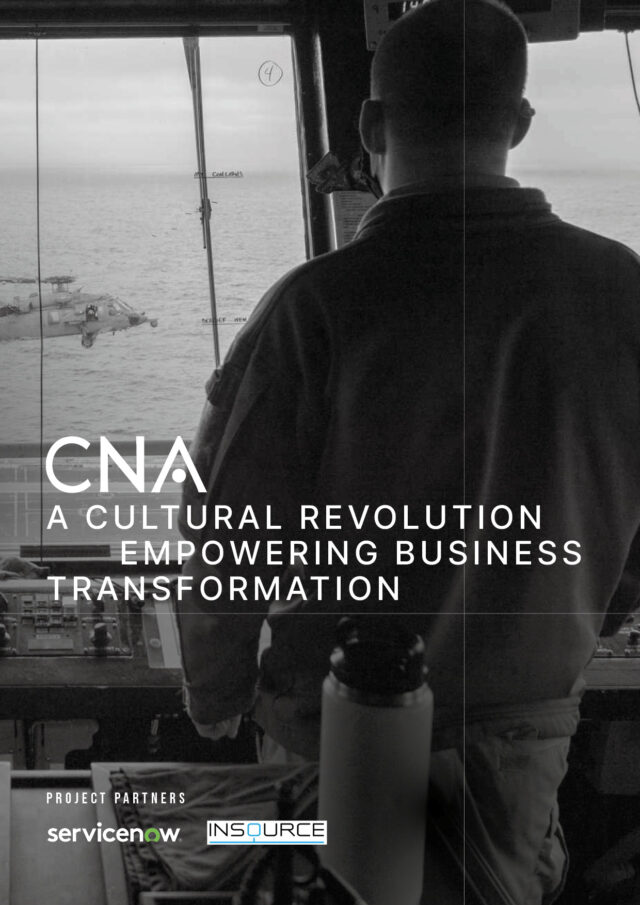It was once feared that technology would render diplomats obsolete.
In the 1860s, upon receiving the first telegraph message, British Foreign Secretary Lord Palmerston famously declared: “My God, this is the end of diplomacy!”
Given diplomats’ emphasis on interpersonal communication, some may indeed shun technology. Yet as communications technology improved through the decades, diplomacy in turn evolved tremendously. Most recently, IT played an essential role keeping diplomacy going throughout the COVID-19 pandemic.
“Prior to the pandemic, State often felt around a decade behind private sector enterprise,” admits Todd Cheng, Director of IT Customer Service at the U.S. Department of State. “When I joined in the early 2000s some of the technology was going on 30 years old, and we were only just enabling internet for desktop computers.
“However, with each additional technology-savvy Secretary of State, the gap between public and private narrowed markedly, and the velocity of change increased. There’s no longer this concept of sitting on even a 10-year-old technology that is not meeting the mission. That’s because the modern diplomat needs parity with the tools in the private sector. Diplomats have never had to open a ticket to use their personal applications and don’t want to for their work applications either.”

A facilitator of diplomacy
Technology continues to play a critical role as a facilitator of US diplomacy, just as it did when the telegraph was introduced to diplomatic processes in 1867. This trend is evident with smartphones, email, laptops, cloud, data and many other devices and pieces of software in between.
Today, Cheng is responsible for supporting the government and industry teams that manage the IT service desk of the U.S. Department of State, the government agency responsible for foreign policy. His team’s mission is to enable the objectives of the Department’s various bureaus to be accomplished as seamlessly and effectively as possible by using numerous technologies that assist diplomats in their day-to-day work.
This involves supporting a hard-working team that is responding on a 24/7, 365-day-a-year basis to customers who encounter IT problems, such as when system updates do not go as expected or cyber issues emerge.
In total, Cheng’s portfolio covers around 75,000 unique customers and upwards 450,000 internal customer contacts every year. Most (around 80%) work across 111 domestic U.S. facilities and now more than 40,000 private homes following the switch to hybrid work triggered by the COVID-19 pandemic.
This mandate stands in stark contrast to when Cheng first joined the Department of State 17 years ago. Back then, Cheng’s first posting was to the U.S. Embassy in Eritrea where he handled the IT demands of about 100 people across several facilities in the horn of Africa.
“I had never travelled overseas before this,” recalls Cheng, who had to wait patiently for two years after submitting his initial job application before getting hired and selected for overseas work.
“The people in Eritrea were wonderful and the technology and infrastructure was challenging, in contrast to what was trending back home. To get a cell phone you had to issue a Diplomatic Note with the local government, and they were limited to only a few at the embassy. There were electrical blackouts 12 hours a day that were commonplace back then and our primary connection to the world was over a large satellite dish – I was certainly chucked in at the deep end.”
Cheng’s first experience in Eritrea revealed the contrast between public and private sector approaches to embracing technology and what technology was available at the edge of diplomacy, in the developing world. It also sparked a passion in the mission of bringing better tools into diplomacy. Since then, the U.S. Department of State’s IT operations function largely via a network of public-private partnerships, embedded in nearly every mission of diplomacy. The management of these relationships is a fundamental part of Cheng’s role since he took on his position three years ago.
Updating the IT model
The IT Customer Care & Support office and Cheng’s position were created by Secretary Rice to centralize IT support. CCS adopted a trending best practice for IT management, the Information Technology Infrastructure Library (ITIL) framework, with the Department of State since 2006. Secretary Powell advocated for smart phones and internet access, Secretary Rice called for more centralized IT support, and Secretary Clinton advocated for migration to the Cloud. The new leadership’s mission is to combine all these past successes to enable the Future of Work for more mobile and flexible diplomacy.
“I’ve been through the process of updating the IT model at State and its contracts twice in three years as we’ve had to change the core contract and update to a new, more customer centric version of ITIL,” Cheng says. “As you can imagine, that involves a fair amount of potential for disruption when you are managing between 1,500 and 2,000 customer contacts a day,” Cheng continues. By his calculations, such changes benefited the organization by reducing customer disruption to save 400,000 ‘diplomacy hours’ every month that are better spent solving global problems.









